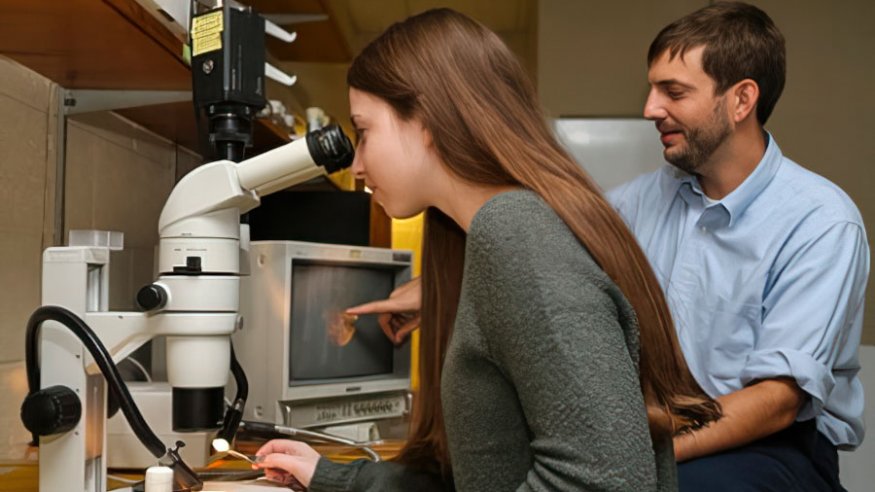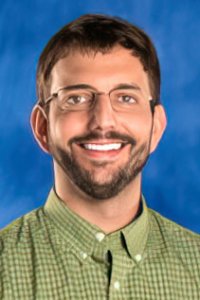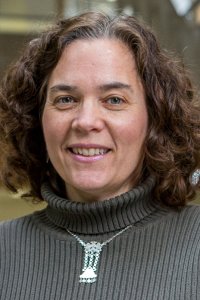It's Inauguration Day!
Congratulations, Matt vandenBerg, OWU's 17th President!
View details for Inauguration Day and stream the event live.
Congratulations, Matt vandenBerg, OWU's 17th President!
View details for Inauguration Day and stream the event live.

November 10, 2020 | By Cole Hatcher


As an Ohio Wesleyan University student, Jacob Kagey worked with his professors on research projects from the first semester of his freshman year through his graduation in 2004.
The opportunities “got me excited about science,” says Kagey, Ph.D., now an associate professor of biology at the University of Detroit Mercy. “I attribute everything at the start of my career to OWU.”
Twenty years later, Kagey continues to collaborate with Ohio Wesleyan. These days, he is working with OWU professor of zoology Danielle Hamill, who now teaches a genetics research course designed by Kagey in 2012.

The course, Fly-CURE (Course-based Undergraduate Research Experience), is based on Kagey’s work using fruit flies and genetic mapping to better understand “how cancer develops, how tumors start, and which genetic mutations cause cancer,” Kagey says. His ultimate goal is to use the research to help pinpoint how cancer develops in humans, too.
Kagey leads a consortium that recently earned a three-year, $300,000 National Science Foundation (NSF) grant. The funds will enable him to expand his undergraduate genetics laboratory course, now taught at seven schools including Ohio Wesleyan, to 20 total colleges and universities.
“Students from participating schools are conducting original research,” he says of the course. “Their work includes collecting and analyzing data in real time to determine the location of mutations,” which he hopes will reveal more about how cancer develops.
In addition to the scientific research, Kagey says, the federal grant will enable him and his collaborators to study more about how students learn complex scientific concepts and ideas.
Because each professor who teaches Fly-CURE personalizes the course to match their instructional styles and objectives, Kagey hopes to use student feedback and outcomes to determine which teaching methods are most effective.
“The goal is to assess the impact of these iterations to determine what is working best to help students learn,” he says, and to revise the course accordingly.
Ohio Wesleyan’s Hamill says the course also helps students to gain valuable research skills as part of their regular classwork.
“Not all students have a chance to do an independent study or other extended research project as an undergraduate, yet these sorts of experiences are very valuable,” says Hamill, Ph.D. “Bringing research projects into the curriculum allows more people to do genuine research and to get a better feel for the scientific process.”
Hamill, who served as Kagey’s academic advisor during his OWU days, says such in-class experiences “can help students to achieve their goals by giving them a mentored research experience that might open the door for them to get additional research experiences, which, in turn, might open up internship or job opportunities and/or make them better candidates for graduate school.”
As for her work with Kagey, Hamill says, “Among other things, he took my genetics class and lab, so it’s a hoot to work with him now for the same course. … I was thrilled when he reached out to see if I wanted to be part of the Fly-CURE project.
“I should note that the roles of teacher/student are very much reversed in this project,” she says. “While I’ve used flies in my teaching labs for many years, I am still rather a novice when it comes to the complicated stuff. Jacob has been wonderful about helping to get me up to speed.”
After earning his bachelor’s degree in genetics at Ohio Wesleyan, Kagey went on to earn his doctoral degree at Emory University in Atlanta, Georgia.
He says he chose OWU as a teen from “middle of nowhere Maryland who wanted to study science and play baseball.” A relative, Robert McQuigg, had taught chemistry at Ohio Wesleyan from 1965 to 1999, recommended the University, and still lived adjacent to campus, helping Kagey to make his decision.
In addition to finding his career path, Kagey also met now-wife Emily Snider Kagey ’04 at Ohio Wesleyan.
“We met in Welch on the first day of our freshman year and started dating a week after,” he says. Snider Kagey, an English and Spanish double major, currently serves as the director of communications for the University of Michigan Life Sciences Institute.
Learn more about Kagey and his work and more about OWU’s genetics major.